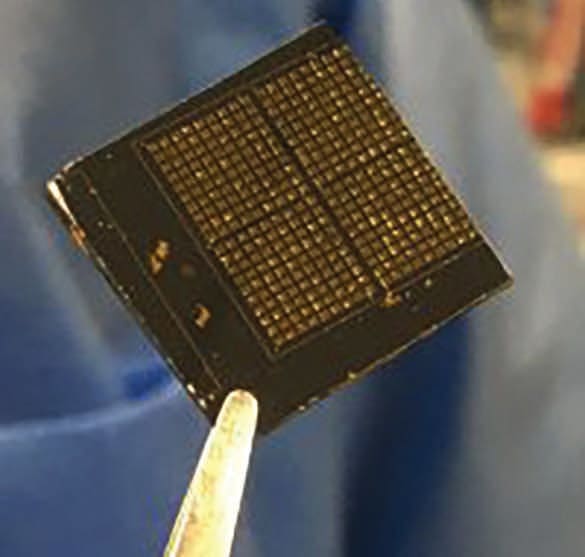
Researchers at University of Central Florida have developed an artificial intelligence device that mimics the retina of the eye. The development could lead to advanced AI that can instantly recognize what it sees, like automatic descriptions of pictures taken by a camera or phone.
The device also outperforms the eye in the number of wavelengths it can see, from ultraviolet to visible light and on to the infrared spectrum. Its uniqueness also comes from its ability to integrate three different operations into one. Current intelligent imaging technology, like what’s used in self-driving vehicles, requires separate sensing, memorization, and processing of data.
By combining the three steps, the UCF-designed device is many times faster than current technology, according to the researchers. The technology is also very small, with hundreds of the devices fitting on a one-inch-wide chip.
“It will change the way artificial intelligence is realized today,” said Principal Investigator Tania Roy, an Assistant Professor in UCF’s Department of Materials Science and Engineering and NanoScience Technology Center. “Today, everything is discrete components and running on conventional hardware. And here, we have the capacity to do in-sensor computing using a single device on one small platform.”
The technology expands upon previous work by the research team that created brain-like devices that can enable AI to work in remote regions and space. “We had devices, which behaved like the synapses of the human brain, but still, we were not feeding them the image directly,” said Roy. “Now, by adding image sensing ability to them, we have synapse-like devices that act like ‘smart pixels’ in a camera by sensing, processing, and recognizing images simultaneously.”
For self-driving vehicles, the versatility of the device will allow for safer driving in a range of conditions, including at night. According to the team, there is no reported device like this, which can operate simultaneously in ultraviolet range and visible wavelength as well as infrared wavelength.
Besides self-driving vehicles, the technology has applications in robotics. Key to the technology is the engineering of nanoscale surfaces made of molybdenum disulfide and platinum ditelluride to allow for multi-wavelength sensing and memory. The researchers said the technology could become available for use in the next five to 10 years.
For more information, contact Heather (Smith) Lovett at

